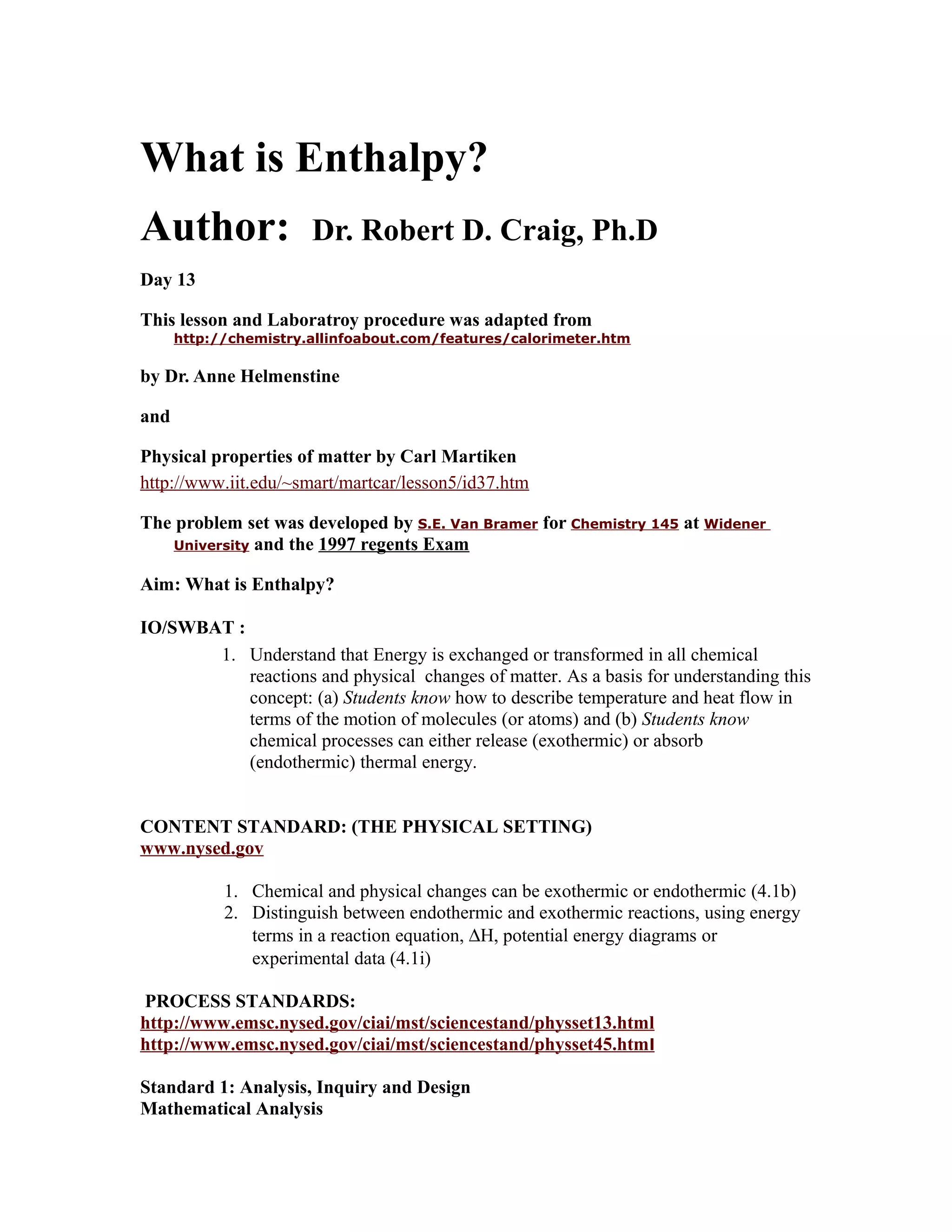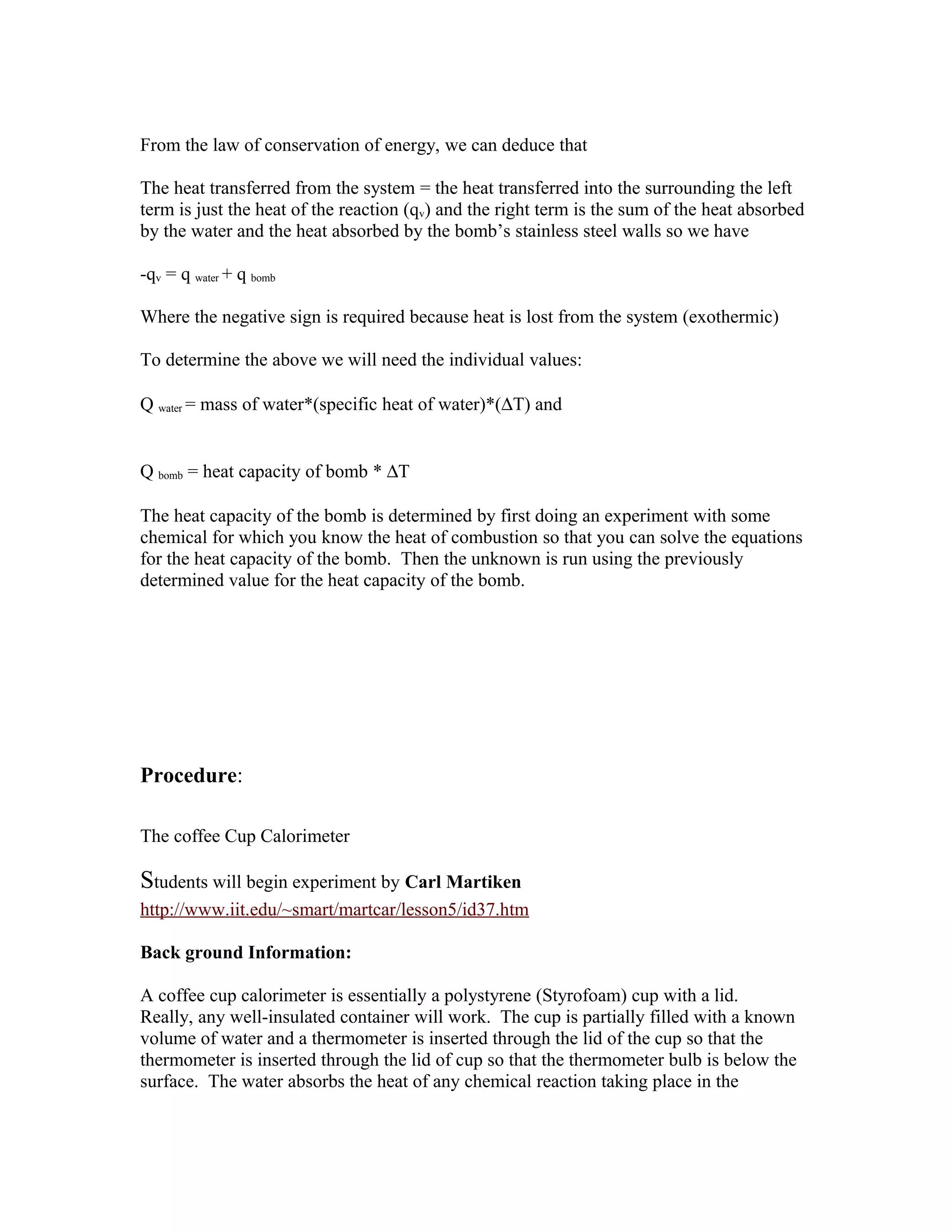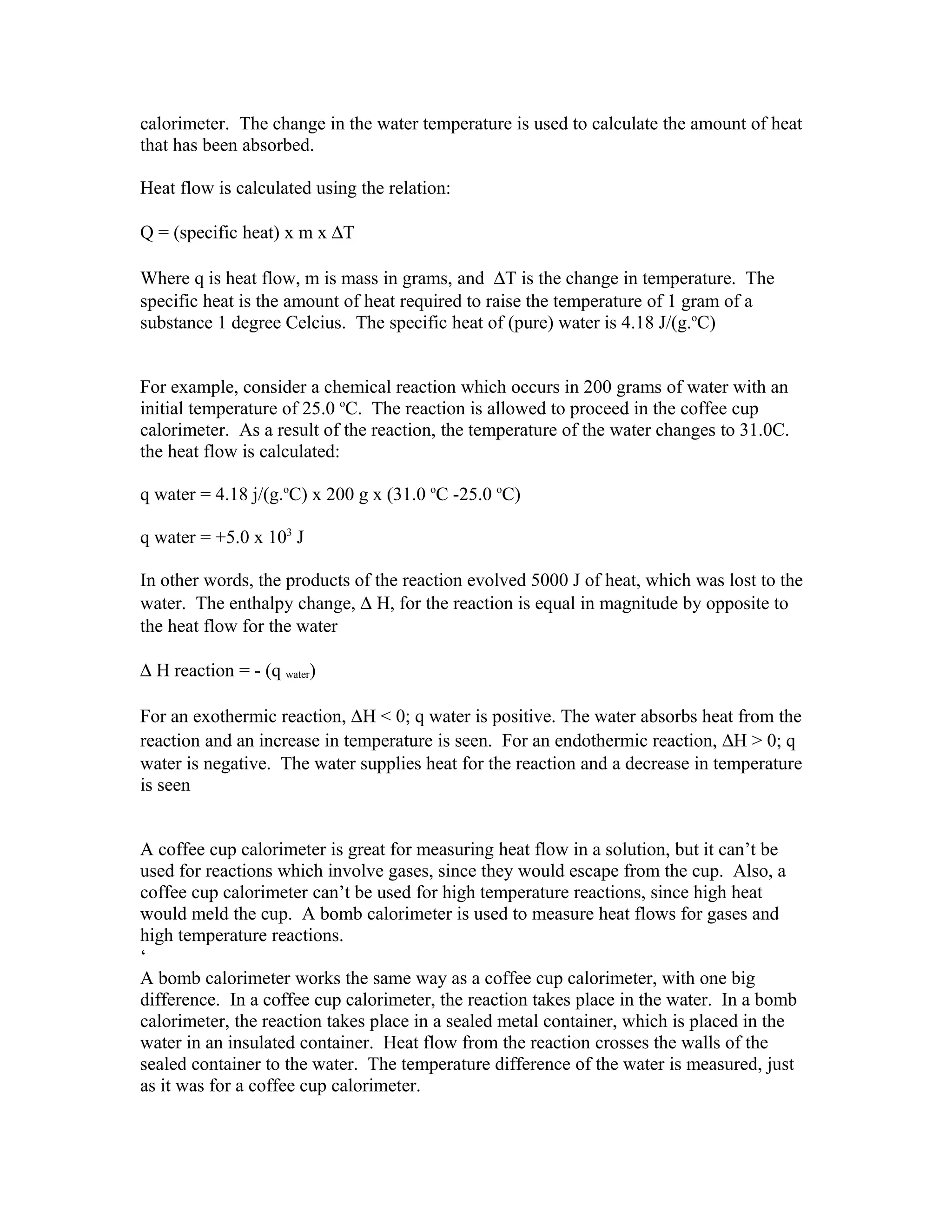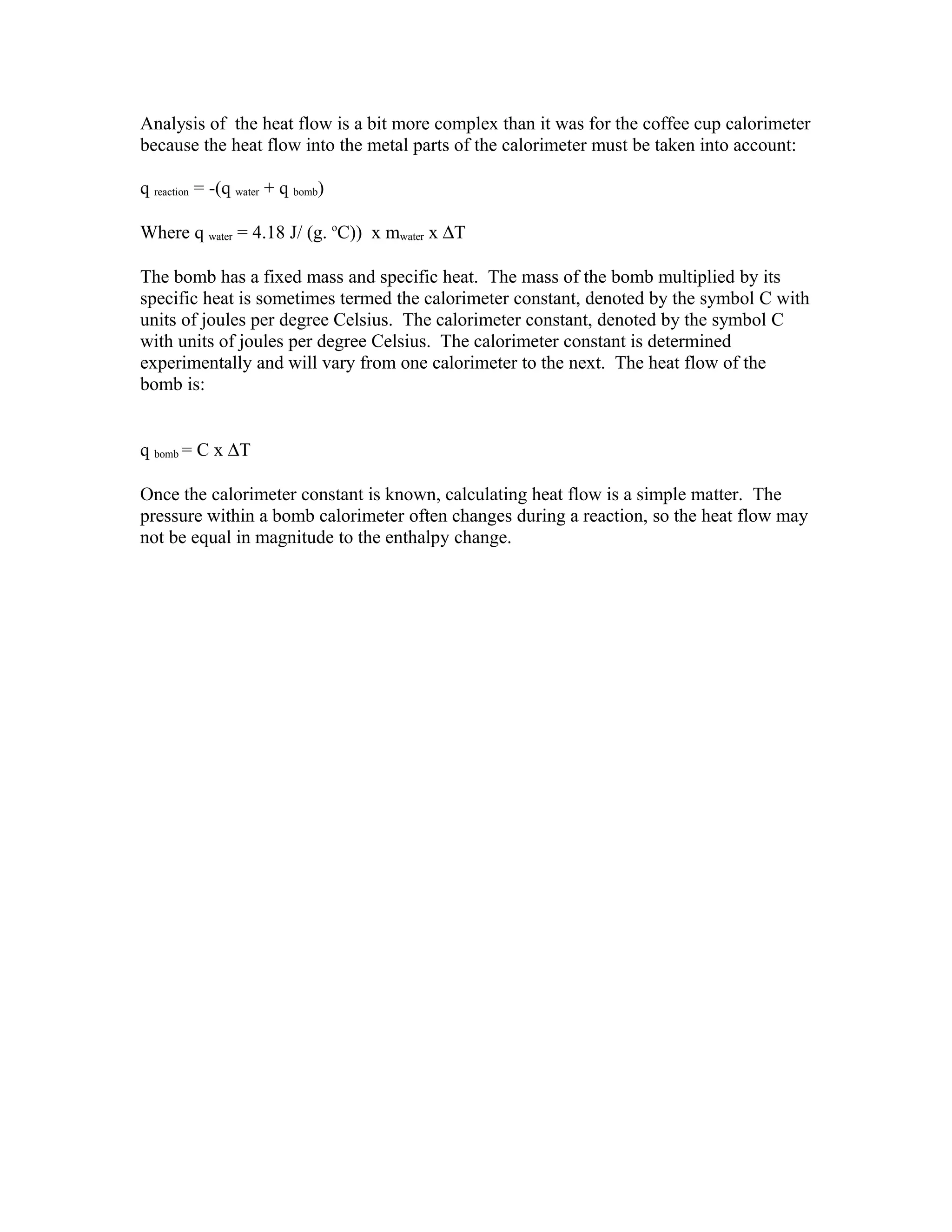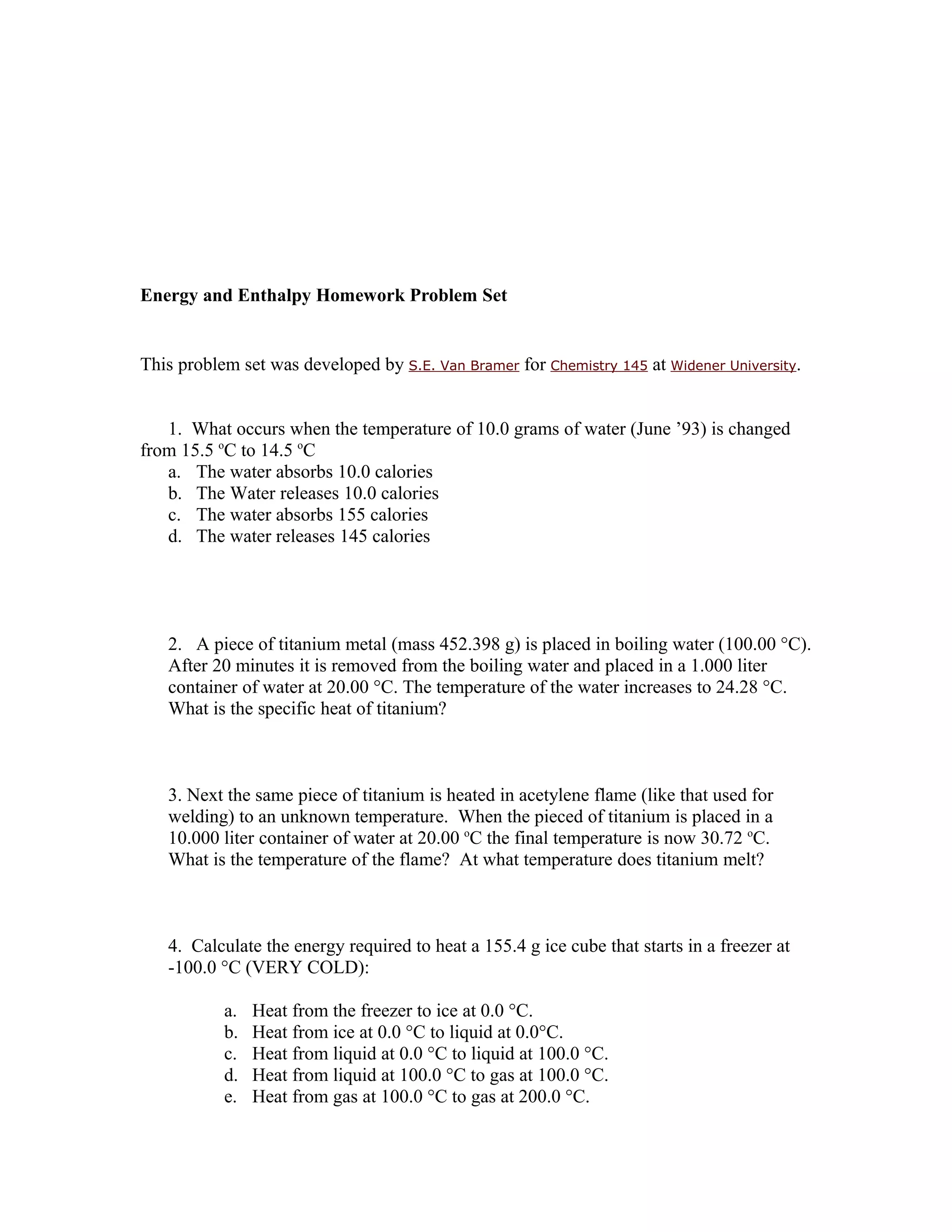The document discusses the concept of enthalpy as it relates to heat exchange in chemical reactions, detailing both exothermic and endothermic processes. It explains the use of calorimeters, specifically coffee cup and bomb calorimeters, for measuring heat flow, including the necessary equations for calculating changes in enthalpy. Additionally, it provides experimental procedures and examples for students to understand heat flow and enthalpy through various chemical reactions.
